
If you’re Hindu, chances are you consider a Burger King Angry Whopper to be pretty barbaric. And I’d imagine a vegan would think a double-cheese and pepperoni pizza from Domino’s to be barf-worthy. As they say, “One man’s fish is another man’s poisson.”
Well, with Halloween around the corner I thought we’d take a look at some global goodies that probably seem pretty strange – even freaky – to a Western palate. Then again, I prefer Mexican-style fried grasshoppers over funeral potatoes. Call me crazy. And, near the top of my favorite food list is ankimo – monkfish liver that tastes not unlike foie gras. It takes all kinds to fill the freeways …
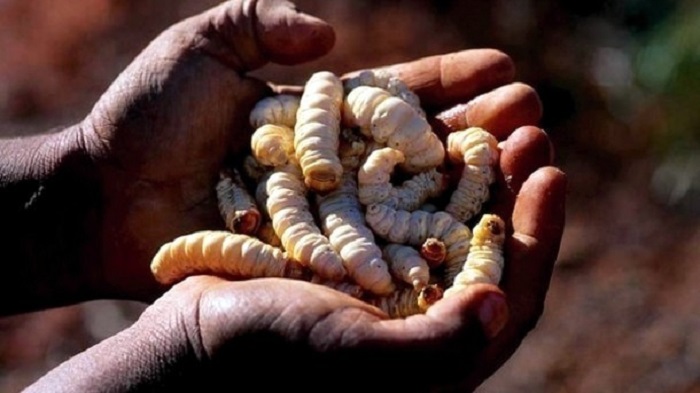
Aboriginal Australian natives who live in the bush traditionally eat witchetty grubs – small larvae of the ghost moth – raw and alive. They’re not for everybody. The grubs are high in protein and quite nutritious. I’m told they have a slightly sweet flavor when enjoyed raw, but are also eaten barbecued with a satay-type peanut sauce, although I can’t figure out why they don’t fall through the grill grates.
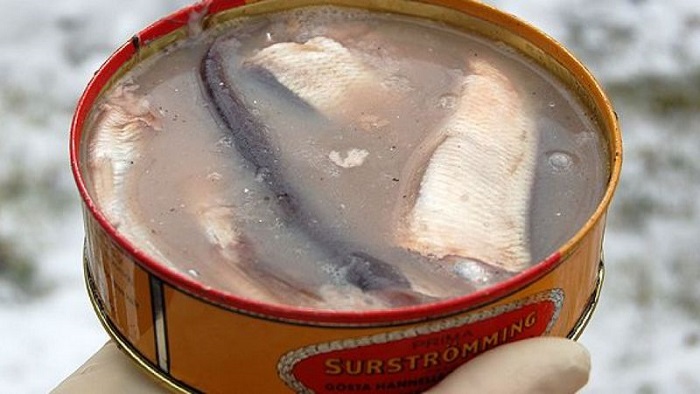
I like herring – quite a lot, actually – but the delicacy from northern Sweden called surströmming would test my fishy tolerance. The herring is salted to keep it from rotting and then spends the next six months or more fermenting. Open up a can of surströmming indoors and it will not go unnoticed, which is why I’m told that this traditional nosh is typically enjoyed by Swedes outdoors.

In the Philippines you’ll find balut – fertilized duck egg with a partially developed embryo inside. To prepare it for a snack, boil it alive and eat from the shell with vinegar, chili and salt, feathers and all.
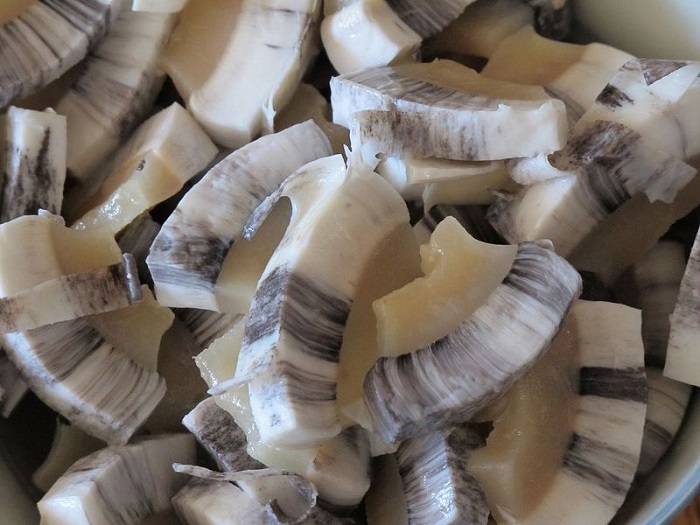
You’ll need to travel to Greenland to experience the chewy, rubbery traditional Inuit and Chukchi meal of muktuk: frozen bowhead whale skin and blubber that is said to taste like hazelnuts. I’ll probably never know.
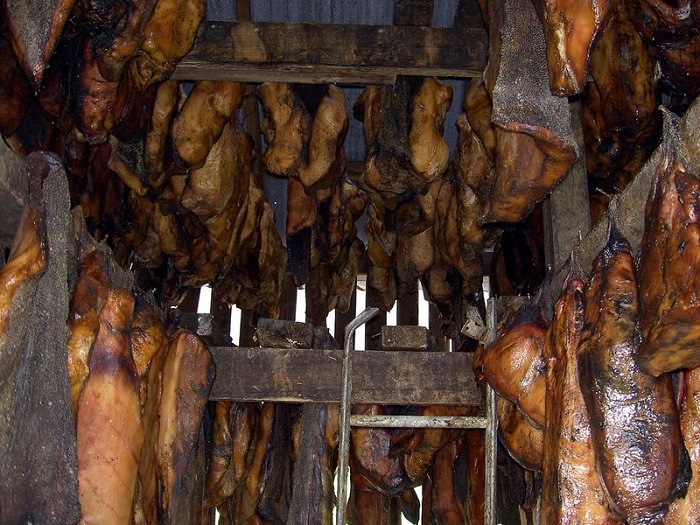
Meanwhile, over in Iceland there is hakarl, which translates as “fermented shark.” To prepare it, a gutted and beheaded sleeper shark is put into a shallow grave and then covered with sand and gravel. The shark ferments in the ground for 6-12 weeks during which time a strong smell of ammonia develops. Then, the shark is taken out of the ground, cut into long strips and hung to cure for several more months. Fish jerky
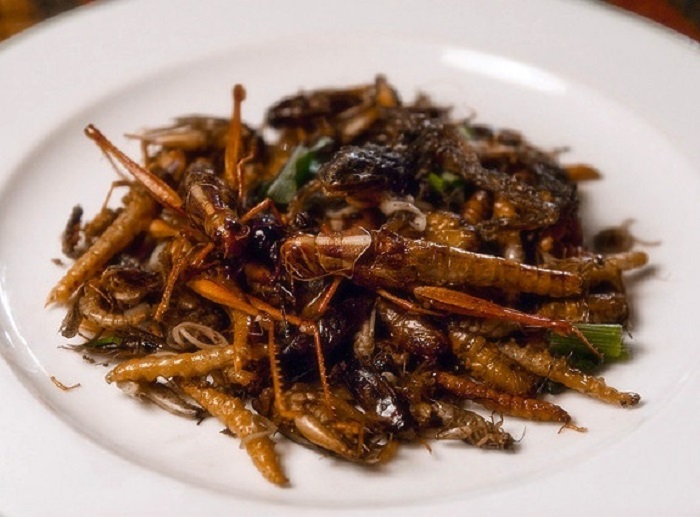
As I mentioned, I’ve enjoyed nutty-tasting fried grasshoppers (chapulines) in Mexico. Believe it or not, this crunchy snack is wildly popular at Mariners’ baseball games in Seattle, as well. Not to be outdone, Israel has turned an unwelcome plague of locusts flying in from Egypt into an unusual kosher snack by eating them deep-fried and covered in chocolate. At Jerusalem’s Eucalyptus restaurant, chef Moshe Basson rolls his locusts in coriander seed, flour, garlic and chili powder before deep-frying them.
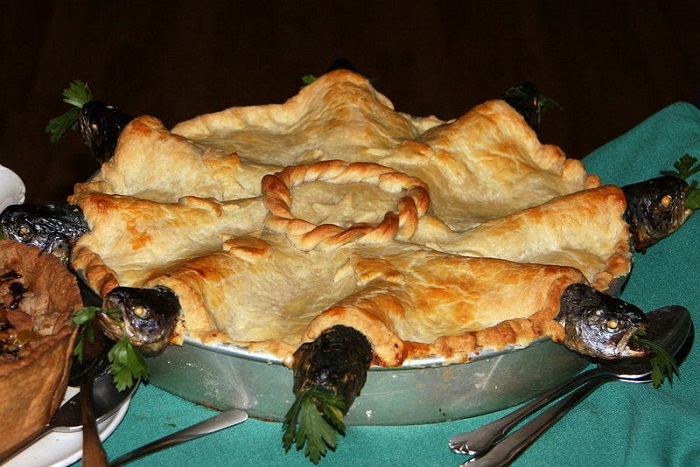
England has never been an A-list destination for gourmet food lovers, but I draw the line at stargazy pie, a strange Christmastime dish there. I does look like a regular pie – flaky crust and all – but with baked pilchard or sardine bodies submerged under the crust and their heads protruding outward, as if they was gazing at the starry, starry night.
Culinary quote of the week:
Why is not a rat as good as a rabbit? Why should men eat shrimps and neglect cockroaches? — Henry Ward Beecher
FOR RESTAURANT REVIEWS GO HERE
THIS CONTENT IS FROM UTAH BITES NEWSLETTER.
GET OUR WEEKLY RESTAURANT REVIEWS, TED’S FAVORITE RECIPE AND DRINK OF THE WEEK DIRECTLY TO YOUR INBOX . TO SIGN UP FOR FREE GO HERE.
 Originally trained as an anthropologist, Ted Scheffler is a seasoned food, wine & travel writer based in Utah. He loves cooking, skiing, and spends an inordinate amount of time tending to his ever-growing herd of guitars and amplifiers.
Originally trained as an anthropologist, Ted Scheffler is a seasoned food, wine & travel writer based in Utah. He loves cooking, skiing, and spends an inordinate amount of time tending to his ever-growing herd of guitars and amplifiers.
SUPPORT OUR SPONSORS: click on their logos to visit their website
[envira-gallery id=”30879″]





